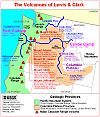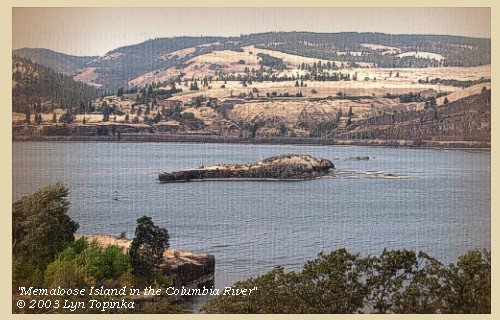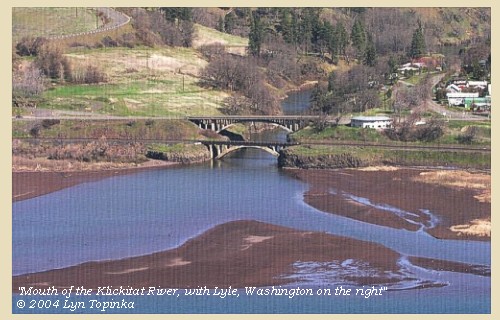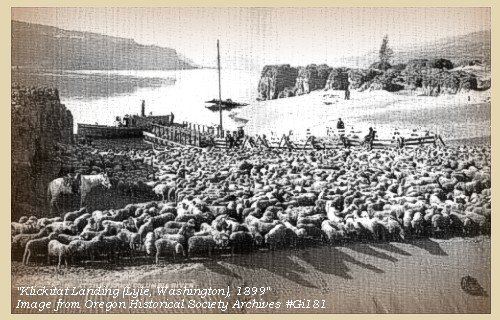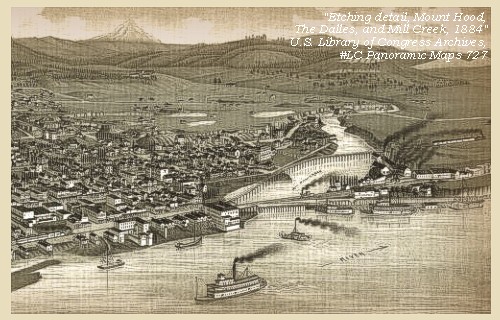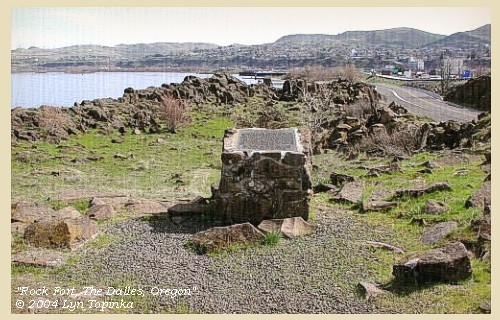The Volcanoes of
Lewis and Clark
Lewis and Clark
|
April 15, 1806 Columbia River Gorge - Major Creek to The Dalles |
|
Home
The Volcanoes of Lewis and Clark Map of the Journey Volcanoes, Basalt Plateaus, Major Rivers, etc. The Volcanoes Mount Adams, Mount Hood, Mount Jefferson, Mount Rainier, and Mount St. Helens CALENDAR of the Journey October 1805 to June 1806 Along the Journey Pacific Northwest Maps - Columbia River, Volcanoes, Flood Basalts, Missoula Floods, Geology, etc. The Corps of Discovery The Journey of Lewis and Clark About the Reference Materials The Journals, Biddle/Allen, DeVoto, Gass, Moulton, Topo Maps, and others USGS Lewis and Clark Links Links to USGS Websites highlighting the Lewis and Clark Journey Resources Publications Referenced and Websites Visited |
PREVIOUS
April 14 Columbia River Gorge, Dog Mountain to Major Creek |
April 15
Columbia River Gorge, Major Creek to The Dalles Memaloose Island, Klickitat River and Lyle (Washington), Mill Creek, Rock Fort |
CONTINUE
April 16-17 Leaving the Gorge, Rock Fort and The Dalles |
|
Heading for Home - April 1806
Columbia River Gorge - Major Creek to The Dalles |
| Lewis and Clark's camp of April 14, 1806, was on the east bank of Major Creek, Washingon, just across from Memaloose Island. |
| Tuesday, April 15, 1806 |
| In hopes of purchasing horses we did not set out ...... till after breakfast, and in the meantime exposed our merchandise, and made them various offers; but as they declined bartering, we left them and soon reached the Sepulchre rock [Memaloose Island], where we halted a few minutes. The rock itself stands near the middle of the river, and contains about two acres of ground above high water. On this surface are scattered thirteen vaults, constructed like those below the Rapids, and some of them more than half filled with dead bodies. |
| "... at 8 A.M. we set out, we halted a few minutes at the sepulchre rock, and examined the deposits of the ded at that place. there were thirteen sepulchres on this rock which stands near the center of the river and has a surface of about 2 acres above high water mark ..." [Lewis, April 15, 1806] |
| After satisfying our curiosity with these venerable remains, we returned to the northern shore, and proceeded to a village at the distance of four miles: on landing, we found that the inhabitants belonged to the same nation we had just left, and as they also had horses, we made a second attempt to purchase a few of them: but with all our dexterity in exhibiting our wares, we could not induce them to sell, as we had none of the only articles which they seemed desirous of procuring, a sort of war hatchet, called by the northwest traders an eye-dog. We therefore purchased two dogs, and taking leave of these Weocksockwillacums, proceeded to another of their villages, [on October 29, 1805, Lewis and Clark referred to this village as a village of Chilluckittequaws, location of today's Lyle, Washington] just below the entrance of Cataract river [Klickitat River]. Here too, we tried in vain to purchase some horses, nor did we meet with more success at the two villages of Chilluckittequaws, a few miles farther up the river. |
| At three in the afternoon, we came to the mouth of Quinett creek [Mill Creek], |
| which we ascended a short distance and encamped for the night, at the spot we had called Rock fort [Rock Fort, The Dalles, Oregon]. |
| Here we were soon visited by some of the people from the great narrows and falls: and on our expressing a wish to purchase horses, they agreed to meet us to-morrow on the north side of the river, where we would open a traffic. They then returned to their villages to collect the horses. |
|
|
|
The Main Camp - April 15 through April 17, 1806:
Lewis and Clark set up camp at "Rock Fort" during both their journey to the Pacific (October 25 through October 27, 1805) and their journey home (April 15 through April 17, 1806). |
| Home | Previous | Continue |
If you have questions or comments please contact: GS-CVO-WEB@usgs.gov
June/July 2004, Lyn Topinka
The Volcanoes of Lewis and Clark Home Page | CVO Home Page

